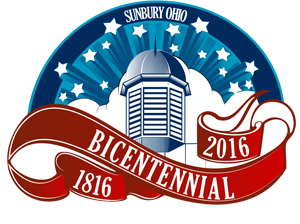| From The Sunbury News, January 21, 2016: |
|
||||||
| Because You Asked . . . . | |||||||
|
Roots in Pennsylvania |
|||||||
|
By Polly Horn, Curator of the Myers Inn Museum |
|||||||
When reading the early grant papers, it becomes obvious the early settlers and their kings thought this continent to be narrow. Grants were made from sea to south sea and did not consider the people already there. Kings of England, France and the Netherlands were all eager to claim North America. They began granting lands to individuals and companies who would develop it for their country. However, it took more than a grant to render title to the lands perfect. Three things were necessary: 1. Must have a grant from the king. 2. Purchase the soil from the Indians. 3. Possession. In 1606 King James of England divided North America lying between the 34th and 45 degrees latitude and granted by patent to Thomas Hanham of Plymouth which became the Connecticut Claim. In 1620 the King incorporated the Great Plymouth Council and granted all that circuit, continent, and limits in America, in breadth, from the 40 degrees of northerly latitude...to 48 degrees of said northerly latitude from sea to sea. They were to distribute, assign, and set over to others such portions as deemed politic and proper. (Massachusetts was carved from this in 1628. Ohio was also part of it.) In 1662 King Charles II granted the land to Connecticut settlers known as Yankees and they founded Wilkes-Barre. However in 1681, King Charles II granted to William Penn, first proprietary and governor of Pennsylvania much of the same land listed above. As a Quaker, Penn set up Pennsylvania as a state open to all persecuted for their religious beliefs. According to his biographers Hans Frantel and Bonamy Duprée, Penn laid the legal framework for an ethical society where power was derived from the people, from "open discourse" as a Quaker Meeting was run. Notably, as the sovereign, Penn thought it important to limit his own power as well. His new government had two houses, safeguard the rights of private property and free enterprise, and impose taxes fairly. It would call for death for only two crimes, treason and murder, rather than the two hundred crimes under English law. Not surprising, Penn’s laws of behavior were Puritanical: swearing, lying, and drunkenness were forbidden as well as "idle amusements" such as stage plays, gambling, revels, masques, cock-fighting, and bear-baiting. William became a popular governor. His government evolved as a democracy and became a model for Thomas Paine, Ben Franklin, and Thomas Jefferson. Unfortunately Penn was not a good businessman so people took advantage of him. When he died destitute in 1718, his first son brought suit against his step-mother to inherit but the courts upheld Penn’s will and the second wife and her family inherited. Hannah Penn and her sons became de facto Proprietors of Pennsylvania. Hannah died in 1726. Her sons Thomas, John and Richard and their descendants retained ownership of the colony of Pennsylvania through the American Revolution. The sons renounced Quakerism and set about to reverse their financial positions by changing the government giving themselves more power. They cheated the friendly Lenape Indians, forced oaths on politicians which kept Quakers from holding public office and made life miserable for the Roman Catholics and other religions their father had befriended. In 1768 Richard Penn by virtue of a Warrant dated 29th day of October 1768 surveyed and established the Manor of Sunbury on a 20,000 acre tract in Wyoming Valley in Luzerne County. Both the Yankees and the Pennsylvania settlers (known as Pennymites) were moving into the Wyoming Valley. Both companies had grants from the king saying the land was theirs if they met the conditions. Both groups bought the same land from the Indians. In 1769 the first of many battles known as the Yankee-Pennymite (or Pennamite) Wars to settle the dispute erupted. Few were killed but depending upon the outcome of the most recent battle your house was in Pennsylvania or Connecticut. In 1782 the dispute was one of the first cases taken to the Continental Congress who upheld the Pennsylvania claim. However, another Pennamite War followed as the Yankee settlers still refused to move. Not until the Pennsylvania legislature confirmed the various 1788 land titles did the controversy end in 1799. Wyoming Valley became a part of Pennsylvania and the Yankee settlers becoming Pennsylvanians. Having fought the Indians, American Revolution and Yankee Pennamite Wars, the people in Luzerne County wanted peace to pursue their lives. Instead the Pennsylvania manor lords were imposing taxes on them to support lavish life styles. Failure to pay taxes meant 3 months in jail to be served in the winter so the men could continue to farm. Many men had either served 3 months in jail or were facing trial for failure to pay taxes. When land speculators, such as Moses Byxbe from Berkshire, Massachusetts, or Jonas Stanberry and Joseph Constant of New York, came through Pennsylvania selling farm land in Ohio with a cheap price tag, men jumped at the chance to get away. Other than Nathan Dustin from New Jersey, the original settlers in Sunbury and Galena came from Luzerne County, Pennsylvania. Their families are in Charles Miner’s 1845 "The History of Wyoming" and the 1924 "Michael Shoemaker Book" (Schumaker), both of which are in Community Library. |
|||||||
|
. . . . And Now You Know |
|||||||
| Bibliography: Miner, Charles: History of Wyoming, J. Crissy, 1845, Phildelphia. Shoemaker, Michael: Michael Shumaker Book (Schumacher), 1924 Dobrée, Bonamy: William Penn: Quaker and Pioneer, Houghton Mifflin Co., 1932, New York Fantel, Hans: William Penn: Apostle of Dissent, William Morrow & Co., New York, 1974 |
|||||||
|
Return to Local History
Index Return to Bicentennial Highlights Return to Home |
(1-21-2016) | ||||||
